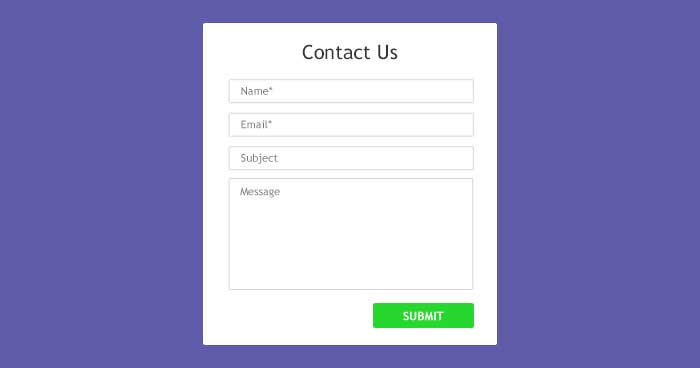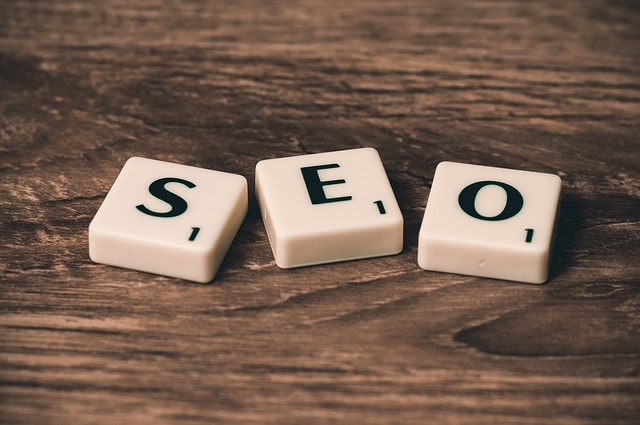|
There are websites that get found by people who have never heard of that business before. They stumble across these sites when they are searching for a solution to a problem or a question. These websites attract new visitors. These visitors are potential new clients, if they find information that is useful or engaging. So whether you are looking to build up a distribution list, your want to inform people of your services or have products to sell, a lead generation website is what you need. If these visitors go on to make an enquiry, through a contact form, email or phones call, and they provide their contact details and permission to get in touch, then they become a lead. Having a website designed to bring in new contacts in various ways can pay itself back many times over. Watch the video or read more about how beneficial a lead generation site can be for your business. Call Perfect Layout Digital Marketing, if you need ways of generating new leads for your business. Call us on: 01708 578 015.
0 Comments
Are you failing to get leads from your website? Does it feel like a ghoul has hijacked business leads? Are you scared about this ever-changing world of digital marketing? Well, Perfect Layout are here to rescue you from your nightmares as we explain how Search Engine Optimisation (SEO) works. If you put in place these strategies, you will see your ranking improve. Are you ready to handle more leads coming to your business?
If you’re serious about wanting people to find you through a Google search, Search engine Optimisation (SEO) must be at the top of your priority list. For example, you you're a structural engineer looking for people planning major works to their property, you want to be sure that you website can be found. The UK is in lockdown and has officially been so since the evening of 23 March 2020. What have you been doing this past week? Have you been spending the time reflecting on your present and future situation? With much of the world working from home, it's important that you maintain as much 'normality' as possible and continue to schedule tasks while committing to your daily schedule. Some of the greatest businesses in the world, were borne out of the most difficult times in history by people who believed in themselves and were committed to their own success. It's time to get resourceful! You might want to take this opportunity to maintain your efforts and stay engaged with your plans, so that you can look towards a better future. Remember:
This isn't time to spend your days sleeping in and binge-watching TV, or scrolling up and down your social media accounts. It's the time to seek out new opportunities. Here are some suggestions that you might like to think about:
 Please know that the Perfect Layout team are here to support your business and offer any assistance you might need for your website and digital marketing. We encourage everyone to remain calm and look past the current situation, knowing that we will recover and that prosperity is on the other side. Stay safe, stay inside, and enjoy this time of reflection that has never before been possible. Take care. There is a lot of information going out to businesses and employees at the moment about financial support. The information isn't static and is evolving daily. Many businesses will be frustrated and concerned. One of our clients, RBSS Consulting is available to help you find the best way to keep your business afloat during these challenging times. At the time of writing this, 23 March 2020, the operational mechanisms for delivery and implementation are still being worked on. Here is what we know so far: Money will not come directly from Government to businesses. It's a wholesale process and it's the Government British Business Bank that will be liaising with selected banks. It is expected that by Tuesday 24 March, it will be clearer on how to get money out to businesses suffering now. Key highlights however are: 1. The CBILS is being disbursed through the banks and even this is evolving with time 2. The schemes are taking time to set up and they think it will start to become available from Tuesday the 24th March 3. Some of the information is still changing rapidly 4. No matter how big or small you are, the government is saying that schemes will become available ranging from Universal Credit for Self Employed to Grants and Loans for SME's 5. Look at your insurance policy under the business interruption section to ensure that this is not covered as the Government will not double fund 6. Government will pay up to 80% of salaries of staff who are kept (where it can be proved that these staff are about to be let go due to the crisis) covering wages of up to £2,500 a month. Does that mean the employer still has to pay the balance? Probably, yes 7. Please note that GRANTS only relate to business rates and you will be contacted directly by the local authority and not vice versa if you are entitled to this 8. Relief for Statutory Sick Pay available 9. Mortgage Holidays even for Buy-to-Let properties 10. IR35 tax reforms postponed for a year  Are you facing Cash Flow problems right now? If yes, then patience and forbearance is what is requested, local authority, trade bodies, banks and brokers are all getting operational mechanisms in place. The key thing to note is Grants are all rate related and Loans will be through banks most likely through the Enterprise Finance Guarantee (EFG) More detailed information is available from the Government website. Here are the participating banks and partners. TO BE ELIGIBLE FOR SUPPORT VIA CBILS, THE SMALL BUSINESS MUST:
To apply for an CBILS-backed facility, businesses may wish to consider approaching one or more participating lenders to discuss their borrowing needs. There is a lot that is changing and information becoming obsolete in a matter of days. So please keep listening and reading, or contact RBSS Consulting directly on 0333 355 1696. 1. Keep it Fresh. Your website content must be fresh, trustworthy and informative. Search engines like new content so you have to keep your website regularly update. Don't create a website and just let it sit there forever.
2. Generate Organic Traffic (Part A). This is part of your search engine optimisation (SEO) strategy and first you have to know and plan your keywords. Keywords are the words that people type into a search engine to find something on the internet. A keyword can consist of a single word, such as "bike" or an entire phrase, like "mountain bikes for beginners". 3. Generate Organic Traffic (Part B). Keyword placement is important. Make sure your 'title tags' (the words you see in your browser window) have your keywords in them. This is what search engines use for the title display in their search results. 4. Generate Backlinks. This where other internet sites link to your website. They are important because search engines look at the number and the level of quality of websites that connect to your website to determine how your page may rank on their listing. One of the most common ways of finding backlinks is in trading links with other websites. 5.Article Marketing. Article marketing is a technique to generate quality backlinks to your website quickly and easily. Each article will have an author's resource information box that is attached to your article submission and you can refer readers to your website. 6. Use Feeder Sites. A feeder site is a third party website that allows you to place content on its webite. Search engines like feeder websites and there are many feeder sites online that you can use to siphon traffic from the search engines to your website. 7. Video marketing. It is easy to submit a video to YouTube and some of the other video sharing websites. Add your site's URL to the video itself, and add a link to your site in the description of the video, too. This will help generate traffic, especially if you target keywords with your video titles! 8. Paid Traffic. Pay Per Click advertising is paying for your website to be at the top of search engine results when a person types in the keywords that best describe your product or service. The higher you bid, the higher your link will be displayed in the list and you only pay when a somebody clicks on your link. 9. Employ a specialist web design / search optimisation company. They can apply methods to get your website near the top of the search page. Employing a specialist to generate traffic will cost you money however their graphics, knowledge and input will be search friendly. 10. Remain Consistent. In order to maximise the performance of all of your traffic campaigns you need to stay consistent, adding fresh new content to your websites and consistently maximising exposure so you keep the momentum going. If you would like help getting your website ranking on page one of Google, get in touch with our team on 01708 578 015. Organic SEO or search engine optimisation is one of the most powerful online marketing strategies available to webmasters and bloggers. It takes a combination of high-quality content, social media presence and other factors to climb to the top of the search engine rankings for your specific keyword phrases. Without the right ingredients, your SEO strategy can actually backfire. It all starts with the keyword phrases and the theme of your content. Without unique, high-quality content, you will struggle to find your website or blog listed on Google, Bing, Yahoo or any other search engine. According to Optimonster these are the most important SEO ranking factors:
Below, you will find the top five organic search engine optimisation techniques and a few tips to help you gain a larger web presence. SEO is no longer a world dominated by the website receiving the largest number of backlinks. Good content Content matters and it must be high-quality content. Low-quality, poorly written content doesn't rank very well because it doesn't provide the user with a great experience. The goal of Google and all other search engines is to deliver the best possible search results for their users. High-quality, usable content provides the type of experience internet searcher want. Most searchers seek information, such as a solution to their problem or a how-to type of article about something specific. When your content delivers this type of experience, you gain higher ranking on the search engines because they consider your content to be high in quality. Use videos or images Not all content requires a video or an image, but the use of both or at least one can greatly aid in ranking higher in the search engines. Images provide away to break up your content, give the user something to draw them in and give you the opportunity to increase your on-page SEO. Whenever you provide a relevant image with your written content, you can change the ALT tag and the image title to match your theme. By using your main keyword phrase or a secondary keyword phrase as the ALT tag and title of your image, you score extra SEO points. Images also provide a second benefit. Google and other search engines will list the images in the "image" search category. This means, when somebody is searching for an image and they find yours, it could potentially lead them back to your website. However, if you don't provide an image title or ALT tag, you may not get listed. Videos are another very powerful way to deliver content. Providing a video with your written content gives the visitor a better experience, as long as the video fits with the content. This is a very powerful way to build better organic SEO. In addition, videos tend to gain higher ranking on Google than some written content does. We can constantly find out more concerning techniques for organic search through correct searching. Create a blog Websites without a blog can still rank high on Google, Yahoo and Bing, but they are missing out on one of the most powerful organic search engine optimisation techniques online today. Blogging provides the ability to target a broader subject area and cover very narrow topics within the broader spectrum. Every blog post acts as a small traffic engine and provides the opportunity to gain more traffic from the search engines. Think of blogging this way, when you post high quality content to your blog, it's like deploying an army of individuals with a stack of business cards. Each blog post will go to a different corner of the internet and attract a different type of individual to your website. Not only can the blog posts take over first page ranking on the search engines, but they also help you build a community. If your blog post covers topics somebody is interested in, they will subscribe to your blog. When somebody subscribes to your blog, you gain multiple opportunities to sell your products and services to them. Use social media Social Media is not going anywhere and it is important to be present on all relevant platforms.Google and other search engines track the networks that your business is connected to. Social signals factor heavily into organic SEO and if you want to rank high for your target keywords, you must use social media and social bookmarking. Sites, such as Facebook, Google+, Twitter, Pinterest many others offer great leverage if a business is looking to increase their organic search engine optimisation. By sharing blog posts across these social media sites, gives you the ability to increase organic search and gain social traffic. Meta tag your website
Your META title, description and tags are really important to your overall SEO. Search engines use the meta data to better understand what your page or post is all about. When a search engine creates your listing, the meta data is used for the title and description showing up for your page or post. With the right title and description, you improve your SEO positioning. Now that you know five of the most important techniques to help you get organic search traffic, it’s time for your to take action. This is not an overnight job, it takes a strategy, a plan and then dedication to keep it up regularly. If running your business is taking up all your time and you need someone else to manage your organic search traffic for you, contact the team at Perfect Layout on 01708 578 015. According to emarketer approximately $11.5 billion was spent on online video advertising in 2018. There is no getting away from the fact that there is now an expectation from consumers to view the products and services of a business in a different format. Those in the know, have incorporated some of their advertising and marketing budget to attract customers by using this method in different ways. The reason for the rise in video advertising becoming more popular is its effectiveness. If a picture is worth a thousand words, a video is worth much more. Forrester estimates that one minute of video equates to 1.8 million words of text in the message communicated. That’s an amazing statistic!
Research shows that four times as many consumers would prefer to watch a video about a product rather than read about it. Video content already represents 76% of all Internet traffic and projections estimate 80% of all Internet traffic by 2019 will be videos. The same study states that using the word ‘video’ in an email subject line boosts open rates by 19% and clickthrough rates by 65%. Video on a Landing PageWhen a visitor lands on your site, you’ve literally got seconds to impress them and get them engaged with what you have to offer. This is the whole point of a landing page. But these days, people are so used to seeing rich media content on the internet that, quite frankly, text content often doesn’t keep them engaged. Embedding a video on your website will not only increase the length of time that visitors stick around, but also, the number of conversions to paying customers, which, ultimately, is what SEO is all about. Cons of using videos on a landing page 1. A low-quality video or poor video execution could possible cheapen your brand and offering 2. A video can be an overkill or a distraction when it's too long 3. An autoplay video might be annoying for users if the website is visited frequently by your prospects and customers. 4. In some instances, an image (meme, infographic, etc.) can be more interesting than a video, especially if your target demographic is less inclined to pay attention to videos. 5. Producing top-quality marketing videos will require hours of learning a new skill set. There are many different types of video content you can use. To give you a flavour of the different types on offer – here is a short list explaining some of them: Demo VideosDemo videos should teach prospects or customers how to accomplish something with your product. It’s not a 1 hour demo caught on camera, but a quick overview of one or more of your features. Keep your demo videos to the point, walk viewers through one action, and do it succinctly. Brands need to create extraordinary video to earn attention, likes, and shares. The video should reflect the business ideology and style in a short and effective way. Event VideosEvent Videos Most event organisers have recognized how important video content is in making people aware of an event. Event videos communicate impressions of the event and transport emotions. Educational VideosEffective educational videos are driven by emotion and backed by facts. Our brains process visual information 60,000 times faster and the use of sound and visual cues increases enjoyment and retention.Video puts us in the room where it happens, which makes it particularly effective in education as it creates context and puts learners at the centre of the action. Explainer VideosObviously, not every business with a website has a product to sell, as some businesses are service oriented. For these, you can increase conversions with the use of explainer/introductory videos. There are varying styles for these videos, and truthfully, there’s no exact science as to what styles work best. It’s more about producing a video that explains/introduces a client’s business effectively and in an engaging way. Animated VideosAnimated video brings concepts to life that text or live videos can’t. Think about it the world really is your oyster where you can make your characters talk all you want, fly, or travel in time. With the help of animation, you can show how mechanisms and processes work in an interesting way. Case study VideosRather than focusing directly on your product or service itself, a good case study tells the story of your customer from their point of view and how your business helped to solve their problems. All of this builds the credibility of your brand. Social proof is another reason why case studies work so well. It’s a psychological phenomenon that means people are more likely to take certain action if they see others taking that action also. Testimonial VideosIf you’re hosting or participating at an event, that means your customers are likely to be there too. Take advantage of the opportunity and get them on camera to create customer testimonials full of passion for your brand. Attendees can also be interviewed on what they are enjoying and learning to get more people to attend your corporate events in the future. This list is just a snapshot of what can be done to help sell your product or service via video. If you need help with incorporating this marketing idea into your digital strategy – give us a call today on 01708 578 015. Social media should be part of your digital media strategy, if you want your business to grow this year. As with all aspects of life, you can choose two paths: 1) to wing it and hope that the path that you follow will work out OK. 2) Set yourself goals and have a plan in place ,which enables you to carry out those steps that lead you to your goal. For business marketing, goal setting is a must, and within that social media should be included. Sometimes it can be difficult to define what your objectives should be. To help you out, here are some of the most usual social media goals to think about: Raise brand awarenessDo people know about the products and service that you offer. In order to create authentic brand awareness, avoid a barrage of promotional messages. Instead, focus on meaningful content. What questions do your customers often ask? Provide them with those answers in good quality content. If you are the right fit for them, they will remember you and will potentially use your services. You can build a strong brand personality through your social channels and regular content that explains who you are and what makes you interesting to them. Drive traffic to your websiteWhilst you can build your followers within each platform, you may also have a need to drive traffic to your website for them to find out more information, learn about your services, and drive product sales. Using the right tools, you can measure how much traffic your website is getting from your social media posts. Build your fan baseThe destination in this social media journey is to have a large and regular following, where your fan base interacts with your page in a natural and engaging way. Spending time and effort to create a positive brand persona on social will get you to this point. Higher quality of salesOn social media, use the hashtags and make sure that you are using specific keywords and phrases. Through structured and thought-through social media targeting, you can reach your core audience much faster. Increase in-person salesDo you have a store/office or other in-person location? These businesses use social media marketing to drive in-store sales. Do you have new products to offer? Consider offering a promotion to those who see your posts and come in-person to see you. This way you can monitor what is working within your marketing efforts. Better pulse on the industryWhat are your competitors doing that seems to be working? What strategies are they using to drive engagement or sales? Having a pulse on the industry could simply help you improve your efforts and take some tips from those doing well. To summarise, you can be as involved in social media as you want it to be. However, if you want to get the most out of your efforts, by wanting people to see your social media posts, you have to produce engaging content and respond to your community. By thinking about what you want, will help you decide how to get there. In online marketing, the conversion rate is the ratio of total visitors to visitors who perform desired actions. Companies will measure successful conversions based on the nature of their business and their goals. An online publisher might consider submitting a form on a subscription page a successful conversion; whereas an online retailer might measure their conversion rate by number of clicks to the "Add to Cart" button. Higher conversion rates typically translates to a greater return on investment. Internet businesses in every industry will use many methods to improve conversion rates. Some of the strategies are listed below: Testimonials reduce risk and provide social proof. Having satisfied customers express their positive experience will increase trust in your business. Every claim you make should be supported by evidence. It is thought that using customer testimonials can result in more than 60 per cent increase in revenue per customer. It’s the recommendation that helps encourage people to buy your product or invest in your service. Customer testimonials show that other people have tried it. Use them on homepages, product landing pages as well as on your email opt-in landing page. You can ask for testimonials or spot them on social media and grateful email messages you get. It is appropriate to ask the sender if they wouldn’t mind letting you use some of those words on your website. A call-to-action (CTA) is a button or link that you add to your website in order to guide your visitor and tell them what to do next. In inbound marketing, they usually lead to a landing page where the visitor can fill out a form and become a lead. You want your CTA to grab the attention of your visitors and entice them to click. Show your visitors an offer that is visually appealing and contains persuasive content as well. In order to ensure your calls-to-action generate leads, you also need to remember the buyer’s journey. If the call-to-action you’re adding to your site doesn’t fulfil the need of your visitor, they’re not likely to move forward. Here are some tips to have in mind when creating calls-to-action that will generate leads:
Call to action examples:
Contact form: The contact form is typically the gateway to allow people to submit their information to a company. This is the gateway for the consumer to initiate a conversion with your company. You need to keep your contact form simple. Keeping it simple will allow for minimal perceived risk to the end user. If it takes a long time to fill out a form it could be a potential risk. Visitors could also be questioning whether they are going to get a phone call or email as well as wondering when they’ll get a response. A good contact form will allow a user to feel that there is no risk in submitting their information. Have only the absolutely needed fields that are required. You can add a few more fields into your contact form to help quality or send certain requests to the correct person. But your contact form should never exceed the length of your browser. In other words, keep it above the fold. Tell people when, how and what to expect once they fill out the contact form. Will they get a call, an email, a package in the mail? That also reduces the risk that a user may feel if they know how they’re going to be contacted and by when. In conclusion, when you pair a simple contact form with a great call to action that is clear and defined, you’re well on your way to a higher converting landing page. Don’t forget to test your call to actions. Since some people react differently to certain phrases, always test to see which one works best for your users. Another approach you can take to increase the conversion rate is to create a sense of urgency. For product-based businesses show how the number of stock items is reducing each time a purchase is made. For service-based businesses include time sensitive offers. This will motivate the visitors to grab the offer before it’s expired. Website design should reflect the vision and purpose of the company. Everything used from colours to layout and images should represent your brand. Keep things simple and aesthetically pleasing. Avoid using complicated navigation menus. Make sure your message is clearly written and has an impact in the first few seconds. If you would like help to make this happen for your business, get in touch with the Perfect Layout team today on 01708 578 015. In short, yes! When it comes to branding and awareness of your company, you should try to be as visually consistent as you can. You want your customers to instantly recognise you. First you must start with your logo and then build out your brand from there. Ensure brand consistency across all your channels Brand consistency refers to your brand identity, brand voice and brand guidelines. Does everything you create follow these guidelines? Doing so is a major step towards letting consumers get to know you as an organisation. When they know you, they will identify with you and your purpose. And when consumers feel like they know you and can trust you, they will be more likely to buy from you. They will also be more likely to recommend you to their peers.
The content on your website, social media channels, newsletters and any offline marketing should all have the same 'feel'. Making connections between the content you own is a great way to maximise your presence. This way you can ensure you get the largest number of eyes on your products and services. When it comes to your website you should ensure that it is consistent with all your other marketing. You should also be mindful of how user-friendly your site is. Can customers navigate around your website easily? Structure: how well structured is the content on your website? You need to aim for a minimum number of navigation layers. Customers want as few clicks as possible to get to what they want. The website section division must be clear, logical and predictable. Minimalism: efficient web page navigation is always simple and user-friendly. Add only those elements to your menu design that are essential for the effective communication. The key to success is a menu bar consisting of a minimal number of sections that goes to what they need. Design: when selecting a design focus on readability, integrity, and harmony. Too many icons, buttons and shortcuts will put visitors off your site. The simpler the web navigation, the likelier customers will stay on your website. Remember that: navigation can affect traffic and how high you’ll rank and how much traffic you’ll get from search. Navigation affects conversions: how easy the site is to use effects what percentage of visitors convert into leads and customers. Social Media Integration Do you want to grow your market and reach a broader audience? Then the key is to integrate your business into social media. Social media channels and your website should work together to promote your online brand. Opening accounts in these platforms is completely free. They are a very good tool to increase your popularity and online presence. Add links to your social channels from your website to increase the chance that search engine users will find your website. Being active on social media channels can help build (or retain) a solid audience. Post regularly and keep your audience updated on your products and services as well as what's new on the market. Unless you are able to do it yourself, marketing requires a lot of time, effort and money. But when it is done correctly and consistently across the various channels, it can be extremely powerful and rewarding. Getting your brand, marketing strategy, website and social media platforms to where you want them to be, takes time and a lot of effort. If you are a small company, it might be worth considering hiring external professionals to help you. If you want to know more about this important topic read our blog How important is branding for my company? You might also like: 50 meticulous style guides every startup should see before launching by Canva. Nowadays it’s plain to see that a massive part of our marketing strategy is undertaken digitally. Consumers and businesses spend more time searching online than anywhere else, so that's exactly where your business needs to be in order to reach them. Whether you have been in business for a while or your business is in its infancy, the ever-changing picture of digital marketing can quickly grow and feel overwhelming. As a self-employed business owner, you are already faced with a long daily to-do list. How are you supposed to create, and maintain, an effective digital marketing strategy too? What is a digital marketing strategy? Your digital marketing strategy encompasses a series of actions (that take place online) with the aim of marketing your business and attracting the right customers. The term ‘strategy’ might seem frightening but simply means, ‘plan of action’. Creating an effective digital strategy doesn’t need to be scary and should be viewed as a necessary tool that's used for bringing more paying customers to your business.  Allow your business to grow and branch out Allow your business to grow and branch out How to build a comprehensive digital marketing strategy You will gain a better insight into your sector by studying other business models and reviewing the approach taken by your competitors. The results can form part of your strategy. The following is a list of other factors to consider when devising your strategy. 1) Identify and build your buyer personas Buyer persona's shows your ideal customer and can be developed by researching, surveying, and interviewing the target audience of your business. It’s important to note that this information should be based upon real data. Making assumptions about your audience can cause your marketing strategy to fail. To get a rounded picture of your persona, try and include information that relates to their demographics, motivations, behaviour patterns and goals. Include a mixture of customers and people outside your contacts database who align with your target audience.  2) Identify your goals and the digital marketing tools you’ll need Your marketing goals should form a significant part of the objectives for your business. For example, if your business’s goal is to increase online revenue by 20 per cent, your goal as a marketer might be to generate 50 per cent more leads via the website than you did last year to contribute towards that success. Whatever your dominating goal is, you need to know how to measure it. The success of a digital strategy will be measured differently for each business and will vary dependent upon the nature of your goal. Having the ability to measure the impact of a marketing strategy is essential as it will allow you to refine your approach accordingly. 3) Evaluate your existing digital marketing channels and assets. Which ones are you using? Should you be on others? The digital landscape changes quite often, so it’s a good idea to do your homework and find out what is out there, who is using it, why are they using it and if it’s a method that will fit in with your business. Not all platforms or assets are right for every business.
The key is to build a plan of what you would like to do and how you are going to achieve this. Can it be executed with your current resources or do you need to invest in more staff or external help? 4) Audit and plan your owned media. Your owned media (original content that you create yourself) is often placed at the heart of digital marketing – your website. Each element of content that your brand creates, such as your website pages, product descriptions, blog posts, e-books, infographics, all helps transform your website viewers into leads and customers. It can also boost your search/organic traffic. Whatever your goal is, you’ll need owned content to form part of your digital marketing strategy. You can then use other platforms (e.g. social media) to broadcast your messages to other audiences. 5) Create a content strategy and develop your earned media Earned media is external publicity that you haven’t paid for. This is media exposure that comes to your business via methods such as, customer reviews, or content that has been shared, reposted, or mentioned by other people on their social media channels. A good content strategy creates earned media. In turn, this exposure gets picked up by search engines and works towards them favourably ranking you above your competitors. Review the digital marketing asset column above and consider which tools will help your business receive more engagements and improve the external publicity for your site. 6) Do you have a budget for paid media? If you have a marketing budget, you may want to spend some of it on advertising. Branded content, pay per click advertising (PPC) or display ads in print/online newspapers/magazines are all varieties of paid media. Budgets can be spent easily, so choose wisely where you want to spend your money. For online businesses, this is an essential aspect of revenue growth and building brand awareness.  7) Bring it all together. It’s never too late to start implementing a good digital marketing strategy for your online business. A combination of owned, earned and paid for media can often give you better results. Remember to plan ahead (as much as is realistically possible) and schedule regular meetings to evaluate the impact and performance of what has gone out. What lessons have you learned? Going forward, does the marketing plan you have in place need to be tweaked? Digital marketing checklist: - Profile of your buyer persona - One or more marketing-specific goals - An inventory and audit of your existing owned, earned, and paid media - An owned content strategy plan - Social media marketing plan - Ideas of how you can create earned content - A budget and plan for paid for content (advertising) Have you got everything covered? We’d love to hear how you plan and action your digital marketing strategy. Leave a comment below to get the discussion started. Whatever type of business you have, there is no getting away from the fact that people will expect you to have an online presence. Whilst some business owners are able to make a reasonable income via social media platforms (like Facebook and Instagram) or e-commerce platforms (like Etsy and Shopify) having your own website has many benefits. If your budget limits you from hiring a website designer, or you are attracted to the idea of creating a website yourself, there are many website providers to choose from. They will advertise low-cost packages with guidance on how to do it yourself, but will the end result generate more customers coming to your site? Five top tips to having a great website  Top tip 1 – ensure that the content on your site accurately reflects the services/products of your business. Your bounce rate will increase if your writing style includes over long sentences, has grammatical mistakes or has a dull/flat tone. Analyse your competitors and review what does and doesn’t work for them. Let your website reflect your personality and the type of business that you have so that you don’t come across as cold and boring. Brainstorm the terms that your customers search for you. Googles keyword planner is a tool that can help you pinpoint relevant long and short tail keywords. Having relevant keywords allow search engines, like Bing and Google, to match the right business to the right customer. We understand that creative writing is not everyone’s cup of tea, so if the thought of doing this doesn’t sit well with you, why not give us a call? We have an excellent copywriting service that can be accessed in isolation or as part of an ongoing package. Top tip 2 – be sure to encourage your conversion rate by giving those perusing your site every opportunity to get in touch or make a purchase. Using Call to Actions (CTA’s) throughout your website are a great way of nudging customers to act. CTA’s can be contact forms, telephone or current special offers.  Top tip 3 – gone are the days when all websites were difficult to view on a mobile phone. Business owners on platforms that are not mobile friendly will be penalised by search engines, which could negatively affect your rankings. When creating your site, make sure it has the ability to respond to the device (mobile phone, laptop or iPad) that is being used. Customers do not like websites that have poor navigation. Make it easy and obvious for people to find their way around your site as clumsy navigation that has not been thought through could lose you income. Top tip 4 – take the time and get your business listed on external directories. This will help boost your online presence as search engines view you as a trustworthy business. Read our blog for more details about why your business needs to be listed on directories. Top tip 5 – consider the layout of your website. Have a theme that limits the use of colours, fonts and gifs. You will want each page to look its best and engage with customers – not distract them. High engagement leads to a higher conversion rate. Pages that are cluttered will prohibit users from scanning text for key points. The use of photographs can really bring a website to life. Avoid using stock images, wherever possible, as they can depersonalise your business. Having images of yourself, staff and business premises will assist customers build a picture of who you are and the service/product you offer. This list will definitely put you on the right track to getting the most from your website. If you find that later down the line your rankings haven’t improved, why not get in touch? Our Perfect Layout web development team are ready to help! Search Engine Optimisation, also known as SEO, is the techy way of describing how to make the most of a website’s online visibility. Imagine you have purchased a house that was in desperate need of repair. How would you go about getting it to look it’s best? There are various things that you could do. You could: replace the windows, build an extension, re-plaster the walls inside out and landscape the garden. After completing these jobs, the house would serve better as a home. It would also be more comfortable and functional. That’s what SEO is. It’s a way of making the purpose of a website work better and be found by people looking for it. If you have a website, blog or online store, SEO can help your business grow and get your business found online. SEO techniques vary. It’s a good idea to make sure that you put in place the basic strategies and check them regularly. The process of optimisation is not a one-time process. It requires regular maintenance and fine tuning alongside continuous testing and monitoring. SEO can increase the quality of a website by making it user friendly, faster and easier to navigate. In today’s competitive market, undertaking SEO is more important than ever. Search engines serve millions of users per day. They look for answers to questions and solutions to their problems. The job of a search engine is to come up with the best options for its users. When applied correctly, good SEO will bring in online traffic and grow your customer base. The following is a list of some SEO techniques that you can apply to your site: - Your competitors are doing itIf your competitors appear above you in organic search, it’s likely that they are applying SEO techniques. If it can work for them, it can work for you too. Invest time doing it yourself or employing someone to do it for you. - BacklinkingBacklinking is a key feature of Search Engine Optimisation. Also known as ‘incoming links’ and ‘inbound links’. This is when a link from an external website is directed towards yours. Websites that link to a variety of authoritative sites will rank higher in search engine results pages compared to those who have links to sites that are not as powerful. Getting it right is key. If you have inbound links on your site that don't relate to the content on the page, they will be considered irrelevant. Your website could be penalised. The higher the relevancy of inbound links, the greater their quality. - Internal linkingLinking to related articles, or pages, on your own website helps search engines better understand the importance and topical focus of each page. Creating links this way assists Google in determining the relevancy of your website. The more people like and share your content, the more visibility you’ll receive from these social media channels. As you develop quality backlinks, it will help to boost and sustain your rankings over the long term. - Back end SEOComplete the page title, page description and meta keywords for each page of your website. Search engine algorithms select websites with keywords that match the users search terms. - Page titlesKeyword-based titles help establish page theme and direction for your keywords. Choose a title that reads naturally and effectively. Make sure it communicates the topic of the page’s content. - Meta tagsMeta description tags can influence click-throughs but aren't used for rankings. Meta tags contain keywords or phrases alerting search engines of a website's content. - Place strategic search phrases on pagesIntegrate selected keywords into your website's content. Make sure the tone sounds natural. Doing this will help the search engines quickly determine what the page is about. - Sign up your websites to online directoriesFind directories where you can list your business for free. This method will get links to your website quickly and naturally. It also helps get your site indexed by the search engines. Start with directories such as yelp, Yellow Pages and Thomson Local. - Maintenance It’s important to continually review the movement of your website. Where does it sit alongside your competitors? You will achieve good results if you consistently undertake these SEO principles. A common mistake is to focus on the quantity, rather than the quality, of backlinks. If you’ve ranked for a particular keyword, there is no need to build excessive backlinks to that page. Google can detect if a site is gaining links at an unreasonable pace. Building links too fast is like waving a red flag that can potentially get your website closed down. If you want to maintain your keyword ranking, try to expand your inbound links to the various pages on your site. This strategy will diversify your backlinking profile and increase your website authority. If this sounds confusing, fear not. The team at Perfect Layout Digital Marketing, would love to help fix your website with some SEO TLC. Give us a call on 01708 578 015
The Havering Museum came about eight years ago thanks to a small band of local people. This included librarians and historians, who wanted a home to celebrate the rich history of Havering from pre-history to the present day. It acknowledges the achievements of local people while exploring how the areas that make up the Borough were formed and developed. The Museum, located in the old Romford Brewery building, opened in May 2010 and is completely volunteer led.
other businesses in the area. I encourage you to see what the Museum has to offer. I am personally thrilled and amazed by the current artefacts that are on display from the Titanic Exhibition and the wealth of external activities and support that the Museum provides to schools and various community groups with for regular events and talks.” For details of forthcoming Events at the Havering Museum go to What’s On. Perfect Layout is a Romford-based company which aims to help business owners (in Essex, London and beyond) succeed online by creating for them the best website that will attract new customers and generate genuine leads. The success of your website is determined primarily by its content. Good content is what sets your website apart from the masses and delivers the right message into the minds of your customers or audience. Having clear, relevant and keyword-rich content that delivers the right message with power and conviction is the key to success. The content of your website should always begin with proper market research. Taglines and slogans that are customer-centric (focusing on the needs of the customer) are essential to capturing their attention. The content on your website should target your audience, engage them and persuade them to take action. Content marketing involves the creation and publishing of content and sharing that content in order to acquire customers. This information can be presented in a variety of formats, including blog posts, videos, white papers, infographics, case studies, and so on. Posting relevant, valuable and frequently updated information on your website will help boost your Search Engine Optimisation (SEO). It will also help by placing you in the position of an expert and allow you to build relationships with your audience professionally.  Your SEO keywords are the key words and phrases in your web content that make it possible for people to find your site via search engines. Quality content writing is the most important part of your SEO. Keywords are very important for every business and a website drives targeted web traffic to your business for free. When a visitor uses a search engine, like Google, to find what they are looking for the content on your website comes under scrutiny. With quality content and SEO-friendly formatting the Google algorithm will look for important words at particular places on your web page or blog post – thus enabling you to get found. Another important detail to keep in mind are long-tail keywords. These are keyword phrases that contain at least three words, and sometimes more. Long-tail keywords are used to target niche demographics rather than mass audiences. In other words, they're more specific and often less competitive than generic keyword terms. They are very specific to whatever you are selling. So, said more specifically, whenever a customer uses a highly specific search phrase, they tend to be looking for exactly what they are actually going to buy. Some businesses choose to include keywords relevant to their business in their domain name. This strategy works as long as the name is in line with the brand identity for the website. It is also important not to limit your business by choosing a name that is applicable for your business only in the short term. Let your 5 to 10 year business plan reflect where you want to be long term. One way in which to create relevant and powerful SEO keyword-content for your website, is through brainstorming. Try and put yourself in the position of your customers and think about the words they might use to search for the services and/or products you are offering. This process can be undertaken on your own or in a group. Because algorithms are constantly changing, it’s paramount that you keep a fresh eye on the content of your site. If people are changing the way in which they search for you – the keywords on your website will need to reflect this too. Why not have a look at your site today and think through some of the keywords your customers might be using. Do they appear on the pages of your site? Simple answer - YES! Whilst there are website design companies like us that optimise websites for a living, undertaking this role is something that you can do yourself. For example, designing a landing page that’s built for leads doesn’t have to be an overwhelming nor time-consuming exercise. By simply looking at examples of some of the best converting lead generation websites, you can learn precisely what works and why. If you want to attract visitors who have a strong intention of ultimately using your services, your landing page will have to have plenty of good content, quality links and authority.
Last week, 13 July, Christine Huntingford from Perfect Layout Digital Marketing was invited to give a presentation at the Havering Chamber of Commerce and Industry (HCCI) breakfast meeting, where members and visitors attended. She thought long and hard about what to talk to them about and decided to make it an interactive session with the participants and let them know in 10 minutes, after a few simple checks, whether their website was working well for their business and whether their website and digital marketing need some real Tender Loving Care (TLC).
For many businesses, social media is an indispensable tool for finding and engaging with customers, improving sales, advertising and promoting products and services as well as gauging trends and offering customer service.
Social media has a significant role in helping businesses as it:
You may have noticed that the world we live in is changing…how we communicate, how we shop and how we do business. Many of these changes have come about as more and more people walk around with mini computers in their pockets. The owners of these Smart Phones range from the very young (many a lot younger than my 12 year daughter!) to the very old - my father wouldn’t thank me for mentioning his age (!). They have a worldwide appeal and their technology becomes more and more sophisticated with each passing year. According to a recent survey of 170,000 adult internet users in 32 markets conducted by GlobalWebIndex 75% of adults that own a smartphone are using them to access the internet. That’s a lot of people! If your business has a website that doesn’t convert for mobile users, you will be missing out on a massive market of potential customers and the real chance of increasing your profits. If you’re reading this blog and wondering how it is that you’ve never come across the term, ‘mobile strategy’ before – don’t worry, there is a way for you to catch up if you implement these 5 tips to creating a mobile strategy. Tip 1 – ask questions Before you begin creating your strategy, have a think about what you would like to achieve by asking yourself and/or your team some of the following. For example:
Tip 2 – do you want a mobile site or a mobile application? If your business has a website you will want it to be mobile responsive. This means that users will not have to download anything to view your information properly. The mobile site can detect the user’s device and automatically format the content for optimal viewing on that platform. Mobile applications require a device-specific download from a marketplace, such as the Apple App Store or the Android Market. Whether you choose to incorporate a mobile site or mobile application as part of your strategy, you will want to ensure that the information is clear and concise – thus easy to understand. Make the user experience as smooth and enjoyable as possible. You want to encourage people to return or recommend your service and/or product.  Tip 3 – combine the use of Social Media into your campaign We all know the power and influence social media platforms have, so now it’s time to think about how best to turn their strength to your advantage. Each social media platform offers tools that enable you to listen to, engage with and monitor your audience. Did you know that 40% of Pinterest, Twitter or Facebook users have purchased something after watching and sharing it? This means that your mobile strategy should integrate with your social media platforms. This includes sharing reviews, having social sharing buttons and creating content that is both engaging for your audience and promoted through social media ads. Tip 4 – create different device campaigns It’s common that households today have multiple laptops, tablets and smartphones that cater for the uses of all the family. According to KISSMetrics, “over 40% of smartphone users watch TV while browsing a smartphone.” Because people are now adept at multi-tasking on this level, it’s important that marketing campaigns are adjusted to take into account the device, location and time of day of the end user. This way, you will be able to maximise your return on investment by delivering content that is relevant to different members of your audience. Tip 5 – send out timely alerts Have you ever found yourself checking your phone even when it’s not made one of those little ‘ping’ noises? Well you’re not alone. If you have done your research and truly know your audience and the time they would like to receive these alerts, take advantage of people wanting to look busy by sending out notifications of your latest discounts, savings or next big event. Please note that this list is not exhaustive and is offered as a starting point to help businesses create a strategy. Have you found this article useful? Give us your feedback and let us know how you have implemented your mobile strategy. We’d love to hear from you!
When people think of branding, they often associate it with having a great logo or a memorable name. But branding goes far beyond the visual aspects of your business. So what exactly is a brand? The short answer is: everything. Your brand includes things such as the look and feel of your website, your customer service and how you engage on social media. It represents every single aspect of your business. Your company’s branding will influence what people think about your business and whether they perceive your brand as being reliable, fun, modern, attractive, cutting edge etc. Beyond just having a memorable logo, good branding increases the value of your company. For larger organisations it provides employees with a purpose and direction. When done correctly it can make getting new customers easier. When all of these parts of the business are working well, the overall brand tends to be in a good position. After formalising a company, anyone serious about their new business will set themselves the tasks of:
Now whilst these are all essential and worthwhile jobs has thought gone into how the branding of the company fits in? Is it being done in the right way? Let’s take a look at how the brand impacts your business: Recognition It’s not surprising that the first thing people associate with branding is the logo; as it’s the first component that people tend to see. Logo design is critical because that simple graphic or icon will be on everything that you do. A professional logo design should be created so that it is simple enough to be remembered - but it must also convey the desired impression of your company. A professional appearance builds credibility and trust. People are more likely to purchase from a business that appears professional and polished, rather than something that looks ‘cobbled together’ or done on a very tight budget. Getting this step wrong could seriously impact the success of your business. Once you have established a (bad) reputation, it’s hard to change it. Positive recognition is essential because it develops a good relationship between your business and your customers. Trust and Confidence People are more likely to buy again from a company when their first experience was good, or when someone has recommended them. Through their own experience they too build confidence and trust with you and your products or services. Once you start to be recognised, you begin to distinguish yourself from your competitors. Strong brands can feel like an extension of you. Just think of the products you buy that you just wouldn’t buy from any other brand. Loyalty A strong brand, with a professional structure behind it, will begin to build loyalty. Once all the aforementioned factors are working in harmony, you are likely to have a customer base that will keep coming back for more. Advertising Advertising is another component of your brand strategy. It is essential for your business to bring customers to you and communicate to the world what your business offers. If it resonates with your would-be customer, then your brand will draw them to your business. It is important to have thought through what you want to advertise, how you want to advertise and where and when you want to advertise. Not thinking through your message and tactics properly may not achieve the desired effect that you want. If done badly, it could lose you money and damage your brand. New Customers Branding enables your company to get referral business from those that are now loyal to you. This is where all companies want to be, as it is the most profitable advertising source. Word-of-mouth referrals are only possible where you have built a solid reputation on delivering a great product or service. Let customers engage with your brand Being on social media will allow customers the opportunity to engage directly with your brand. You can do this by simply creating a hashtag for your business, which should feature in every post you publish. This will help people remember the brand if they see this in every post. Branding motivates employees Many people choose the companies they want to work for because they are aligned with their ethos and practices. People often aren’t simply looking for work, but looking for their ideal employer. When employees understand your mission and reason for being, they are more likely to feel that same pride and passion and will align their attitude with the company’s. Take the time to invest in your brand Unfortunately, many businesses don’t prioritise branding and this is a huge mistake. Poor branding impacts your business in many negative ways and can threaten the survival of your company. Your brand is the face of your business. How do you want people to feel about your brand? Invest the time, energy and resources to develop a brand that you’re proud of. This is not a quick win – good branding takes time and planning. But remember that it’s worth the investment and it will help boost your profits. If you need advice on branding for your business or are looking for a website design in Essex, then look no further. Call Perfect Layout Digital Marketing on 01708 578 015, email us at [email protected] or complete the contact form below. The Perfect Layout has a team of copywriters that can create relevant content for your website. Having a team means that we are able to provide a wide ranging bespoke copywriting service that caters for all markets. You will have seen us write about content in our blogs before. The importance of content on your website relates not only to the visitors to your site, but also when it comes to being found by search engines like Google. We understand the importance and will ensure that the language of the text: • reflects you – the face behind the business • your ethos – what your business stands for • and describes your services and products in a way that will engage your customers and allow them to quickly grasp what you do It’s paramount to create content that people will be interested in reading and that’s exactly what we do. Our process is simple. We will meet with you face-to-face or arrange a time to Skype or talk to you on the phone. We are good at asking questions and the more questions we ask, the more we will be able to write in a way that sounds like you. We want to hear how you would speak to prospective clients so that when it comes to writing about what you do, it will be as though you wrote it yourself. We will ask questions like:
These are questions you could ask yourself now. Does the content on your website answer these enquiries? If not, it may be time to either re-write your content or give us a call. The fact is, whether you are in the line of work that provides a locksmith service or have just started your own firm of solicitors – the principles behind asking these types of questions remain the same. For every service, we’ll incorporate relevant facts that are appropriate. For example, your new firm of solicitors will need to include an overview of how the law impacts on what you do for your clients. It’s always key to remember who your target audience is to ensure that your services can be understood and accessed by as many people as possible. The content we produce will also incorporate keywords relevant to your sector. Are you a locksmith that is able to change the locks to only certain doors? If so, describe the type of doors. Do your services cover a certain area? If so, describe the services you provide and where. Does your business offer a 24 hour lock changing service? If yes, then say how and where your out of hours facility works.  Let your content build a picture of how you are... Let your content build a picture of how you are... Think of pertinent questions that your customer might ask and answer them. That way you will begin to build a picture of your business that will contain relevant keywords to get you found by your customers as well as the search engines. Other than listening to what you need, our service also includes offering ideas that will help draw out the best aspects of your business. For example, ideas that will: • make you stand out from your competitors • incorporate current trends within your industry that should be included in your content • include changes that are occurring in the local area that could have an affect your service Get in touch if you feel that your content is in need of being re-worked. The bottom line is, great content will get you noticed for all the right reasons! Give Perfect Layout Digital Marketing a call on 01708 578 015, email us at [email protected], or complete the contact form below. If your business has a website, it is important not to see yourself as a stand-alone island with no links to other shores. If you want your island to be successful it needs to have connections with other islands that are well connected too. In other words, having your website is just one of the steps of having a good online presence. However, it is imperative to take the time to list your business on other online directories too; so that they not only promote your services, but also add authority that you’re a current and valid business to approach. When creating your listing on directories, like Thomson; on websites like NetMums, or on social media platforms like Facebook, you should include as much information about your business as possible. This includes giving obvious information such as your name, address and phone number (NAP). Google My Business has made many changes to their features (read our article: What's new with Google My Business?). All businesses should list their information on it as a starting point in creating citations. Why is it worth taking the time to cite your business on directories? It allows you to be found by a greater number of customers through search engines like Google. The more directories your business is cited on, the better chance you will have for your business to rank highly in organic search. With the majority of users turning to their mobile device to look for products, information and services, online directories help facilitate being found at any time, from anywhere. Do you want to miss out on potential business because you didn’t take the time to invest in this digital strategy? Each directory company will offer different features, but this is what you may be asked to provide:
Listing a business on a directory is not difficult, but it can be time consuming. If you choose to give it a go yourself, make sure you do the job properly. If you don’t, it could affect your income, online rankings as well as your reputation. Follow these tips to ensure that search engines, like Google, view you as a business that’s real and trustworthy and ultimately worth ranking:
Remember, citations that are accurate will help your business get noticed. So what are you waiting for? If you don’t have the time, or the inclination, to do this, the team at Perfect Layout can help you. Fill in your details below and we’ll get in touch to find out more about your business. By filling out this form, we will only contact you regarding this matter; we respect your data.
If you have accessed your Google My Business (GMB) listing recently you may have noticed some changes. Whilst you may think, ‘here we go again, another thing to add to my to-do list’ it is worth taking the time to update your profile and ensure that everything is relevant and fresh. If you are a small business you will know that reaching a wide customer base can be tricky. With this free-to-use profile, invest the time to make your business shine. Be one of the leaders in this change making sure that your profile is singing your praises from the rooftops. If you haven’t created a Google My Business listing, Perfect Layout Digital Marketing recommends that you do. Not only does it show the essence of what your business has to offer, but the new features means that this platform is more attractive than before. Why is local SEO so important? If you are a local business, local SEO could have a huge impact on the success or failure of your business. You can use local SEO to outrank the competition. The relevant information is accessible for everyone to take advantage of and whilst many local businesses spend their time running their business, digital marketing is usually at the bottom of their list of things to do. For companies making use of local SEO and in the case of Google My Business, taking advantage of the new features demonstrates to potential customers that they are: staying up-to-date, that they are knowledgeable and well-informed and that they are taking strides to separate themselves from the competition. The result is that it can help secure potential customers more easily. Would you like this to be you? So what’s new with the Google My Business Listing? Information section This is a snapshot of the most important information that a potential customer may be interested in The information section includes opening hours, reviews, address, phone number etc. Company Description Ok, so what’s so great about the description feature? Well it’s back! And that IS exciting. When Google My Business was called Google Places, the description section about your company was available, but then they took it away. Now all businesses have the opportunity to describe the wonder of their business on GMB in 750 words or less. Make sure you spend time writing a description that will attract customers to engage with you. Messaging In 2017, Google released a new messaging feature, which allows you to 'live message' with customers directly from the search results page. So if a customer has a quick question, when you have this function enabled they can send you a message and in an instant you can reply…talk about fabulous customer service before they have even come to you! If your information changes, like your business location, name, or telephone number, Google will allow you to easily make updates to your dashboard. This is another feature that they once removed but has resurfaced again and it is this tool that will help you make changes more easily. Videos Yes Google My Business Photos has added video content as a feature. Posting videos on your listing can help encourage customers to stay on your listing for longer and therefore find out more about you. These videos can give you the edge to your competitors. Currently, video clips are limited to 30 seconds in length and they will feature next to the photo section. Restaurant Menus If the business you own is a restaurant and your listing is categorised as a restaurant (vs a café or bistro), Google have been thinking hard about you guys. Restaurant owners can now add and edit menus on their Google My Business listing. There is now a facility that will allow you to categorise the food into sections, such as starters, mains and desserts, as well as adding descriptions and prices. Again, this is a powerful tool that can help you stand out from the crowd. Why is your restaurant different from the others in your area, what makes you special? Do you have something unique? Do you have special offers? Remember to include as much information as you can to help you stand out and get the diners through the door. Posts ‘Posts’ is the most exciting feature that looks to have a big impact on local businesses and their local search engine optimization (SEO) strategies. The feature will allow businesses to quickly connect with customers, both new and old, in a unique and attention grabbing way. Posts allow you to share content with people who are searching for terms related to your business. It can be seen as a cross between social media marketing and search engine optimisation. It not only allows you to increase the visibility of your business, it also offers a way in which you can give deeper information about your services and products, that otherwise wouldn’t be possible. You can also post links to your website and include call to action buttons like ‘Buy’ or ‘Learn More’. Using Posts also helps you to get more of the organic search impressions and clicks. When you decide to include Posts on Google as part of your local SEO strategy, remember that this task will never stop. This is another beast that will need constant feeding. However, it is worth giving it a try. What have you got to lose versus how much do you have to gain? If all of this just seems too much, help is at hand. Give Perfect Layout Digital Marketing a call on 01708 578015, or fill out the quick form below so we can get in touch with you. If you complete this form, we will only contact you to ask you about GMB listings.
There are good websites and there are bad websites. If you have had a website for a while, but you find that you are not getting much from it, in terms of traffic, leads, calls etc, it could be that people are finding your website tricky to navigate or difficult to find the right information. I know it’s hard, but every six months or so, it is worth doing an audit of your website with, 'a fresh pair of eyes’, to check that everything is relevant and it all still makes sense.
Take a look at your website. Does it convey the culture of your business and your personality? All too often websites are faceless. The tone of the content is formal and photos have been uploaded from stock libraries that don’t truly reflect the nature of the services and/or products. If you offer a service, where you start and finish a project, nothing will truly convey who you are and what you do better than visual files - whether that be photos or videos. We live in a world where social media is a dominating part of our lives, where reading one post can lead to 30 minutes of unplanned surfing…So why not turn this time and energy observing from the outside, to becoming somebody that is observed? By putting your real presence into your website, your personality will shine through in a positive way that will get you noticed and potentially earn you income creating leads.
Even if what you offer is a generic service, your website can incorporate a portfolio of the work you have undertaken. Excellent ways of capturing this are by having before and after shots or images that detail the progress more in-depth. If you’re not good at taking photos, why not hire a photographer that is willing to follow you around for a day or two, taking photos while you work. These don’t need to be staged, they can be documentary-style photos capturing you in a natural way. We live in a competitive age, where businesses that do the same as you are peering over your digital shoulder. It’s important that you take the time and think of ways you can stand above the opposition and entice people to choose you over them. There are other ways to make your website reflect your personality and below is our sum up of some definite, 'must do's'. 5 tips to making your website look unique: Tip 1 Use great photos - make them personal and relevant to your services and products. Your personality will come across if customers can see you at work; see your work in progress; or have the opportunity to view your end results. Tip 2 Videos that show your services/products are an excellent way of showing what you do in a different way. If you're confident in front of the camera, allow your personality to shine in front of your customers. Tip 3 The content on your website can also convey the person behind the business. Whilst you want to avoid grammatical mistakes and spelling errors at all costs, your voice should also come through to relay what your business does in a way that attracts the right customers. Tip 4 Pay attention to the layout of your imagery and content. Each page should be thoughtfully considered to ensure that your user has the best visitor experience possible. Tip 5 Does your business have a unique name and image? Branding your business will help establish your foothold in your market. Deciding on a logo, colours and font all help to differentiate you from competitors and attract online visitors. If your website could do with a makeover, give Perfect Layout Digital Marketing a call. We can help you decide in which direction to redesign your website as well as recommending logo and branding designers, and documentary photographers to make your website shine!
|
Topics
All
|
Insider's guide to Search Engine Optimisation
Are you ready to improve your own website? Here's a front-page preview to our guide that can help. Complete the form and download your free copy!
Perfect Layout Digital Marketing
|
HoursM-F: 9am - 5pm
|
Telephone |
|
Copyright © 2024. All rights reserved. Blog policy. Privacy Policy. Photography by Picture Partnership














































